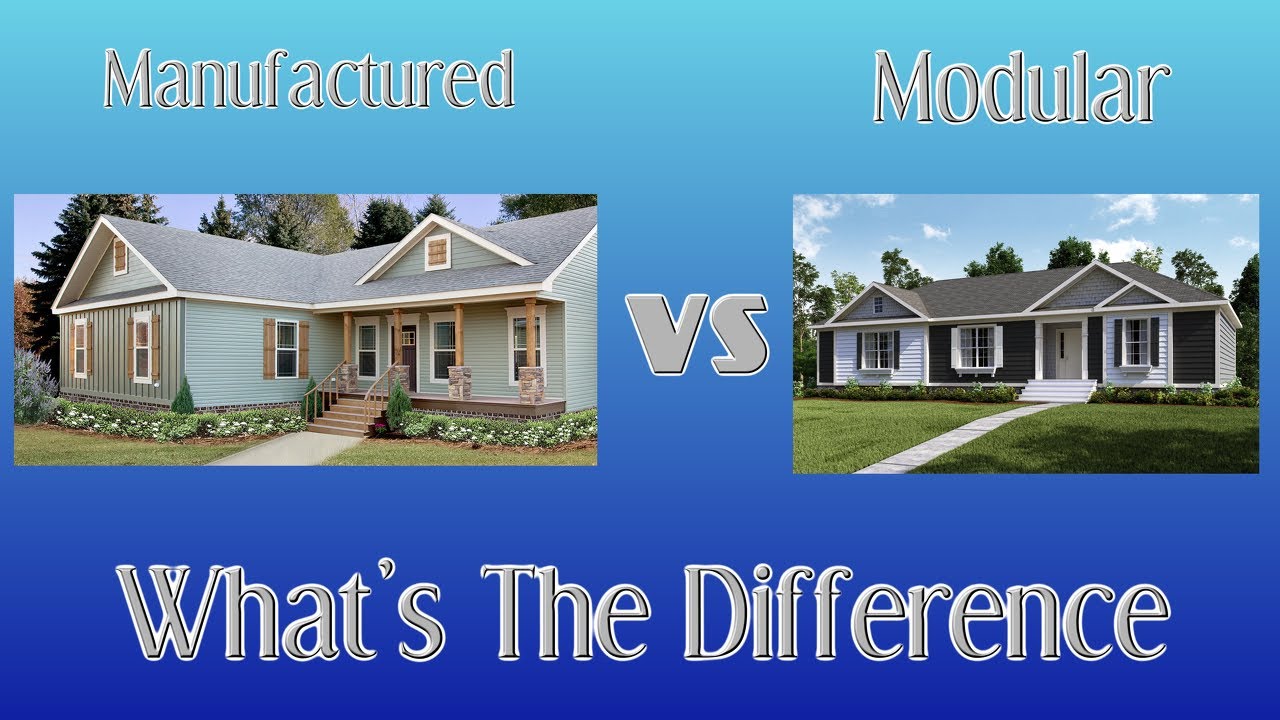The world of affordable housing offers a diverse range of options, with mobile homes and prefab homes being two popular choices. While these terms are sometimes used interchangeably, they refer to distinct types of housing structures with unique characteristics. In this comprehensive guide, we’ll explore the key differences between mobile homes and prefab homes, shedding light on their construction, mobility, design, and overall suitability for different lifestyles.

Defining Mobile Homes and Prefab Homes
- Mobile Homes: Mobile homes, also known as manufactured homes, are dwellings that are built off-site and transported to their final location. Historically, mobile homes were designed to be easily movable, hence the name. However, contemporary mobile homes are often permanently set up in communities or on private land. They come in various sizes and styles, providing an affordable housing solution for many.
- Prefab Homes: Prefab homes, short for prefabricated homes, are built in sections or modules at a factory before being transported to the building site for assembly. These homes are not necessarily designed for mobility but are constructed in a controlled environment, ensuring precision and efficiency. Prefab homes encompass a wide range of styles, from traditional to modern, offering homeowners flexibility in design and customization.
Key Differences
- Mobility:
- Mobile Homes: While the term “mobile” implies mobility, modern mobile homes are often placed on a permanent foundation. Some can still be relocated, but the process is more involved than it was in the past. Mobile homes are typically transported on wheels, making them easier to move than traditional homes.
- Prefab Homes: Prefab homes are not designed for frequent relocation. Once assembled on-site, they become a permanent structure. The construction process, however, allows for greater flexibility and customization compared to mobile homes.
- Construction Process:
- Mobile Homes: Built entirely in a factory, mobile homes are constructed on a steel chassis, which allows them to be transported. The assembly includes the installation of plumbing, electrical systems, and other essentials. The controlled factory environment ensures consistency in construction.
- Prefab Homes: Prefab homes are also constructed in a factory, but they are built in sections or modules. These modules are then transported to the building site and assembled into the final structure. This method allows for efficient production and reduced on-site construction time.
- Design and Customization:
- Mobile Homes: Mobile homes may have limitations in terms of design and customization due to their construction on a steel chassis. However, manufacturers offer a variety of floor plans and design options to accommodate different preferences.
- Prefab Homes: Prefab homes offer a higher degree of customization. Homeowners can often choose from a range of finishes, materials, and design elements to create a home that suits their style and needs. The modular construction allows for flexibility in floor plans.
- Building Codes and Regulations:
- Mobile Homes: Mobile homes are subject to specific building codes set by the Department of Housing and Urban Development (HUD) in the United States. These codes are designed to ensure safety and quality standards for manufactured homes.
- Prefab Homes: Prefab homes are generally built to meet local building codes, which can vary from one location to another. The on-site assembly process adheres to these codes to ensure that the final structure complies with regional regulations.
- Foundation:
- Mobile Homes: Mobile homes can be placed on either a permanent foundation or concrete piers. The choice depends on local regulations and the homeowner’s preferences.
- Prefab Homes: Prefab homes are typically placed on a permanent foundation, similar to traditional site-built homes. This foundation provides stability and support for the assembled structure.
Final Words
In the world of manufactured housing, understanding the distinctions between mobile homes and prefab homes is crucial for prospective homeowners. While both offer affordable and efficient alternatives to traditional construction, their mobility, construction processes, design options, and adherence to building codes set them apart. Whether you prioritize mobility, customization, or a blend of both, carefully considering the differences will help you make an informed decision that aligns with your lifestyle and housing needs. As the housing industry continues to evolve, both mobile homes and prefab homes contribute to the diverse landscape of affordable and accessible housing options.

